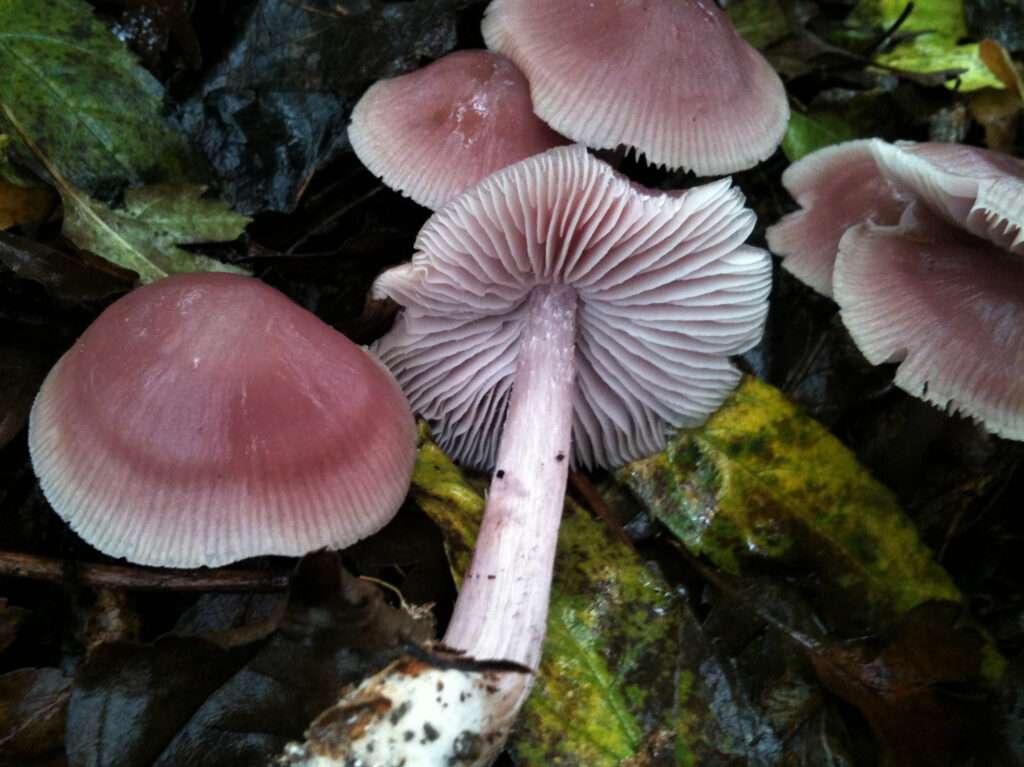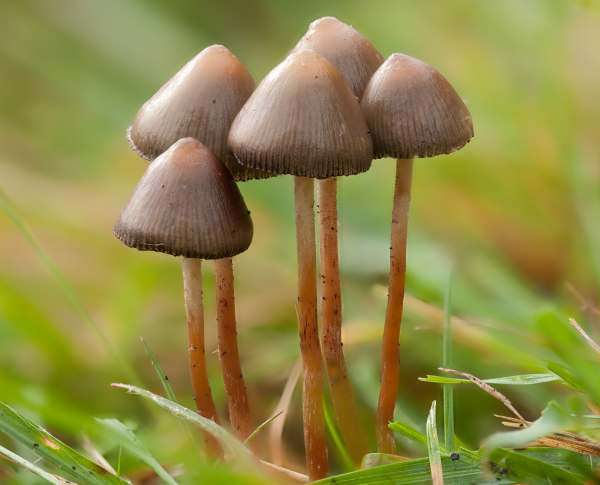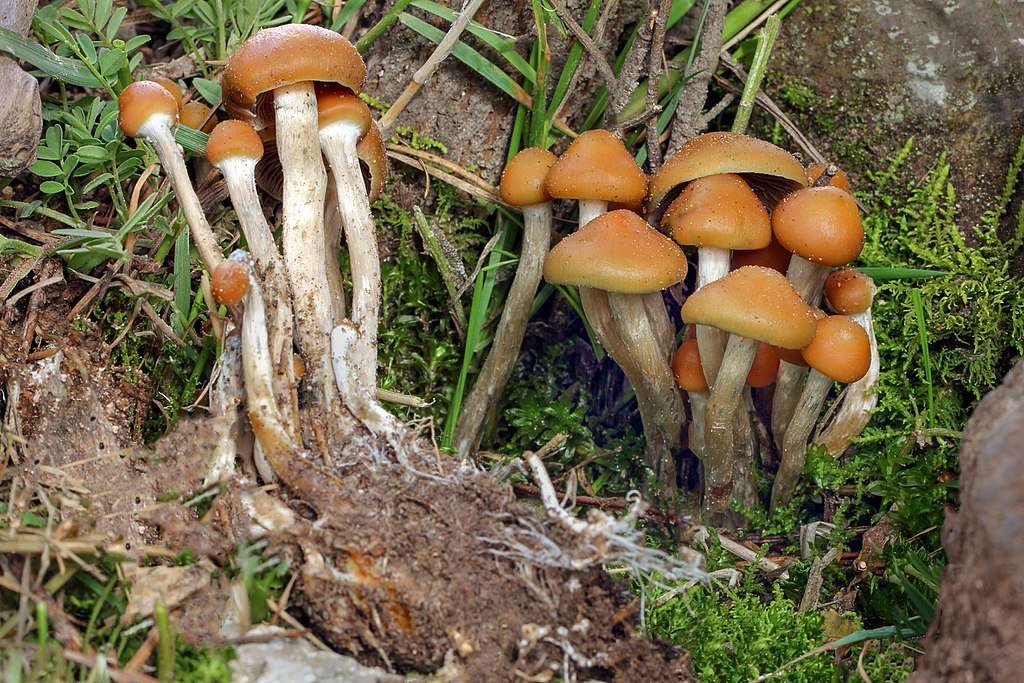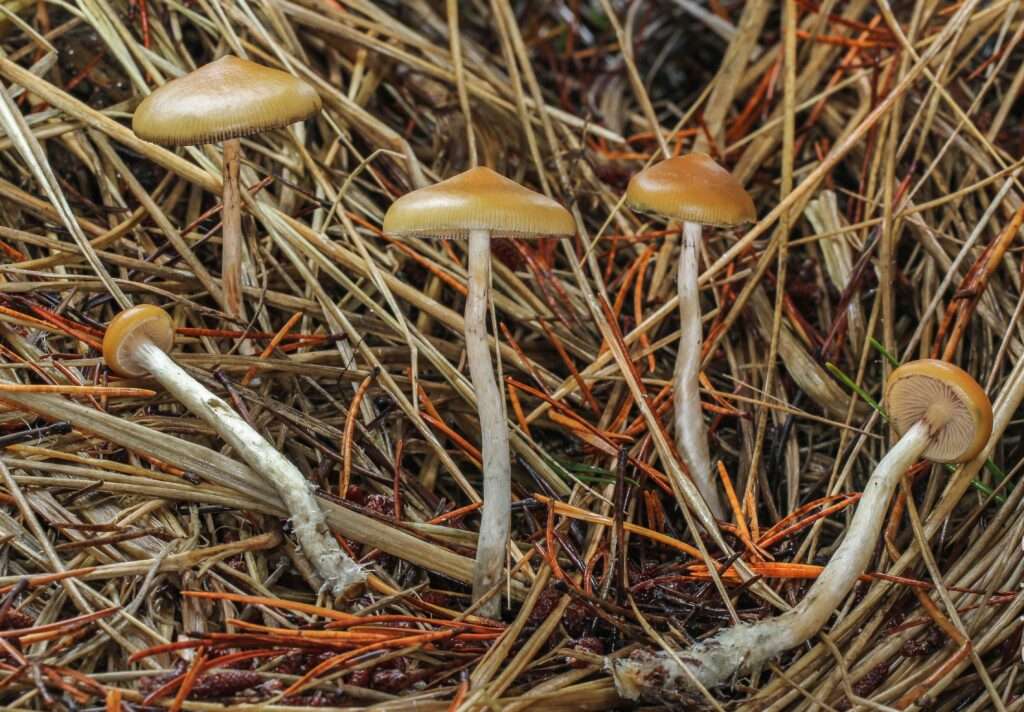
Scientific name
Mycena rosea
Description
The pink Bonnet mushroom is a delicate, fragile, and beautiful mushroom that is light pink or lilac in color. These mushrooms have a cap of 2- 10 cm in diameter and have very delicate and thin flesh. A juvenile individual has a convex crown with a prominent hump. The crown flattens and acquires a depression in the middle as it ages. When damp, mature mushroom borders are somewhat in-rolled, curved, and striate. The color of the cap varies as well with age. When immature, the color of the cap is pale violet or lilac, but as it ages, it begins to become light brown from the center out. The surface of the cap is dry, drab, and smooth. Even in wet conditions, the surface never becomes sticky. This mushroom has extremely thin flesh. It starts off lavender and turns brown with age.
They have wide gills that are profoundly sinuate and light pink in appearance. They have a hollow stem that is white-pale pink in color. The stem is smooth and has longitudinal fibers, and tapers somewhat towards the tip. They do not have a stem ring. The stem penetrates the leaf litter because the base of the stalk is somewhat shaggy. Their spores measure about 6- 5 by 3- 4.0 µm. They are ellipsoidal in shape, smooth in texture, colorless, and thin-walled. Spores are kept together in groups of two or four by slender basidia measuring 13-16 by 4-6 µm.

Habitat
The pink Bonnet mushroom is native to Ireland, Europe, North America, and Britain. They preferably grow in clusters on moist soil, leaves litter, and decaying damp wood. and old wood logs.
Uses/Importance
This saprotrophic mushroom grows alone or in small groups in mixed forests and gardens. Furthermore, groups of species have been shown to form obliquely spreading concentric rings known as “fairy rings”. Mycena rosea fruit bodies include alkaloid pigments that are the distinctive features of this mushroom. to this species. These compounds, known as mycenarubin A and mycenarubin B, are linked to damirones found in marine sponges. These mushrooms are not edible as they are poisonous in nature due to the presence of muscarine, which is toxic.
Table





